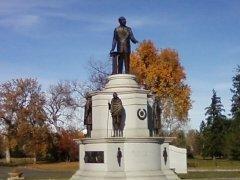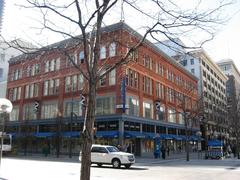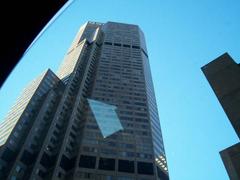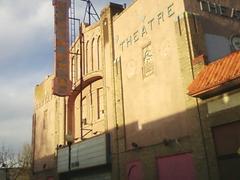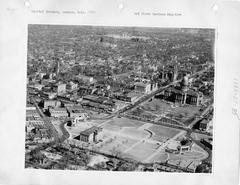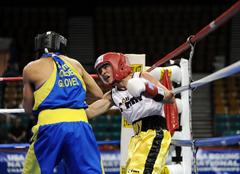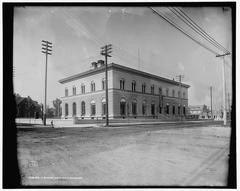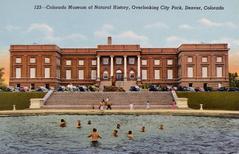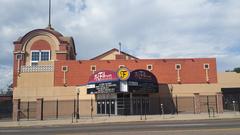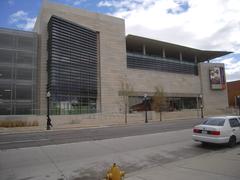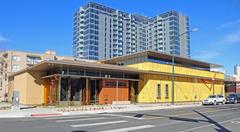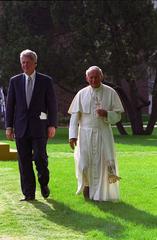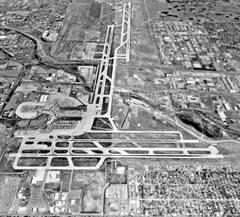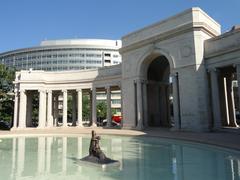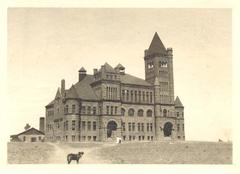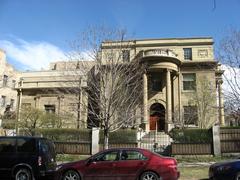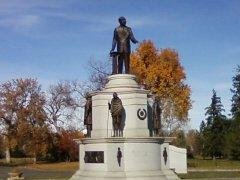
Statue of Martin Luther King Jr. Denver: Visiting Hours, Tickets, and Visitor Guide
Date: 14/06/2025
Introduction
Denver’s Statue of Martin Luther King Jr., located in City Park, is a powerful testament to Dr. King’s enduring influence and the city’s longstanding commitment to civil rights. Officially known as the “I Have a Dream” Memorial, this monument was dedicated in 2002 and crafted by Ed Dwight, one of the leading African American sculptors in the United States. The memorial connects Dr. King’s legacy to the broader global struggle for justice, featuring additional figures such as Frederick Douglass, Mahatma Gandhi, Rosa Parks, and Sojourner Truth. Its rich symbolism, educational elements, and artistic merit make it a must-visit destination for those interested in social justice, American history, and public art (Waymarking; Denver Public Art).
The monument is not only a place of reflection, but also a vibrant hub for civic engagement. It serves as the focal point of Denver’s annual “Marade,” one of the largest Martin Luther King Jr. Day celebrations in the country, and remains an active site for educational programs and community gatherings (Mile High Mamas; Colorado Sound).
This comprehensive guide covers the statue’s origins, design, visitor information, cultural significance, recent preservation efforts, and practical tips to enhance your visit. Whether you’re a local, a traveler, or a history enthusiast, the Martin Luther King Jr. Memorial offers a meaningful way to engage with the ongoing pursuit of justice and equality in Denver (National Park Service; Architectural Digest).
Table of Contents
- Origins and Early Commemoration Efforts
- Commissioning the Current Monument
- Design and Symbolism
- Historical and Cultural Context
- Visitor Information: Hours, Tickets, and Accessibility
- Nearby Attractions and Travel Tips
- Artistic Details and Educational Features
- Recent Events and Preservation
- Frequently Asked Questions (FAQs)
- Visuals and Media
- Legacy and Continuing Relevance
- Plan Your Visit
Origins and Early Commemoration Efforts
Denver’s commitment to honoring Dr. King dates back to 1976 with the installation of the city’s first public monument to him, “Martin Luther King Jr., Prophet for Peace” by Edwin Rose III. This original statue, located in City Park, depicted Dr. King and Emmett Till, symbolizing both the cost and the hope of the civil rights movement (The Clio). The inclusion of Emmett Till was powerful but sparked debate about how best to represent Dr. King’s legacy. Eventually, the statue was relocated to the Martin Luther King Jr. Museum and Cultural Center in Pueblo, Colorado, setting the stage for the creation of a new memorial in Denver.
Commissioning the Current Monument
By the late 1990s, civic leaders including former Denver Mayor Wellington Webb and Wilma Webb led efforts to commission a new monument that would expand on Dr. King’s legacy and connect it to global human rights movements. Ed Dwight, a University of Denver alumnus and pioneering African American sculptor, was selected for the commission. Dwight’s career, marked by a focus on African American history and public art, made him the ideal artist to realize this vision (Waymarking; CBS News; ABC News).
Design and Symbolism
Dedicated on June 9, 2002, the “I Have a Dream” Memorial stands approximately 28 feet tall, constructed of Sierra White granite and bronze. At its center is a 9-foot-8-inch bronze statue of Dr. King, depicted in a dynamic pose suggestive of leadership and vision. Four life-sized bronze figures—Frederick Douglass, Mahatma Gandhi, Rosa Parks, and Sojourner Truth—stand nearby, embodying the monument’s central theme: the interconnectedness of global and American struggles for justice (Waymarking; Wikipedia; Architectural Digest).
A compass star motif in the plaza’s pavement represents the moral compass Dr. King brought to the movement. The Rocky Mountains provide a dramatic backdrop, symbolizing both the beauty and the challenge of the quest for justice.
Historical and Cultural Context
Dr. King’s ties to Denver are both historical and symbolic. He visited several times in the 1950s and 1960s, notably speaking at New Hope Baptist Church during the Montgomery Bus Boycott era. It was at this church that King first heard “If I Can Help Somebody,” which became a signature song at his events (Denver7).
City Park itself is historically important as a gathering place for Denver’s African American community and is the starting point for the annual Martin Luther King Jr. Day “Marade”—one of the largest such events in the country (Mile High Mamas).
Visitor Information: Hours, Tickets, and Accessibility
- Location: City Park, near East 23rd Avenue and Colorado Boulevard, Denver, CO.
- Hours: Open daily from dawn until dusk; accessible year-round.
- Admission: Free; no tickets required for general visits.
- Accessibility: The site is wheelchair accessible, with paved walkways and ramps.
- Guided Tours: While no permanent tours are offered, special walking tours that include the statue are available through local organizations, especially during annual events.
Nearby Attractions and Travel Tips
- By Car: From downtown Denver, take Colfax Avenue east to City Park.
- Public Transit: RTD bus lines 15 and 20 serve the area.
- Nearby Attractions: Denver Museum of Nature & Science, Denver Zoo, City Park Pavilion, and Five Points neighborhood.
- Travel Tips: Parking is available but limited during major events. Public transit is recommended for large gatherings.
Artistic Details and Educational Features
The memorial is rich in interpretive elements:
- Engraved Tablets: Timelines and quotations from Dr. King and other civil rights leaders.
- Bronze Liberty Bell: Symbolizing freedom.
- Bronze Slave Ship Outline: Illustrating the journey from slavery to freedom (Vanderkrogt Statues).
- Relief Panels: Highlighting African American participation in American wars (AP News; ABC News).
- Benches and Landscaping: Encourage reflection and community gathering.
Recent Events and Preservation
In February 2024, significant vandalism occurred, with major bronze panels and elements stolen. The incident prompted a swift community response and a police investigation. Through the efforts of Ed Dwight and local organizations, the stolen pieces were recovered and restored, underscoring the community’s commitment to preserving the monument (CBS News; AP News; Sportskeeda).
Security measures have since been enhanced, and ongoing preservation efforts are supported by the City of Denver and community organizations.
Frequently Asked Questions (FAQs)
Q: What are the visiting hours?
A: The monument is open from dawn until dusk, every day.
Q: Is there an admission fee?
A: No, the site is free and open to the public.
Q: Is the monument wheelchair accessible?
A: Yes, the site features paved, accessible pathways.
Q: Are guided tours available?
A: Occasionally, especially during special events or through local organizations.
Q: Can I take photographs?
A: Yes, photography is encouraged.
Visuals and Media
For high-quality images and virtual tours, visit the Denver Public Art website. Descriptive alt text such as “Statue of Martin Luther King Jr. Denver City Park” and “MLK Denver bronze sculptures” are recommended for accessibility and SEO. Interactive maps and event updates can further enhance your visit.
Legacy and Continuing Relevance
The Martin Luther King Jr. statue in Denver stands not only as a monument to the past but as a living space for reflection, education, and activism. Its design, educational features, and ongoing role in community life ensure its continued importance as a touchstone for civil rights and social justice in Denver and beyond (Architectural Digest; Waymarking).
Plan Your Visit
To make the most of your visit, check local event listings, utilize public transit when possible, and consider exploring nearby attractions such as the Denver Zoo, the Museum of Nature & Science, and the Five Points neighborhood. Download the Audiala app for guided audio tours and stay updated on events and preservation news.
Internal Links
External Links
- Dr. Martin Luther King Jr. Colorado Holiday Commission
- Visit Denver - Martin Luther King Jr. Day
- Denverite Coverage of Marade
- Denver Post on MLK Memorial Vandalism
Summary and Final Tips
The Statue of Martin Luther King Jr. in Denver is a vibrant symbol of justice, resilience, and community activism. Open year-round and free to visit, it serves as a focal point for education, commemoration, and ongoing dialogue about civil rights. Whether you’re attending the annual Marade, exploring the city’s cultural heritage, or seeking a place for reflection, the memorial offers a meaningful experience deeply rooted in both Denver’s and America’s social justice history (Waymarking; Denver Public Art). For an enriched visit, leverage digital resources such as virtual tours and guided experiences. Plan your visit and connect with the enduring legacy of Dr. King and the broader movement for equality (Mile High Mamas; Colorado Sound).
References
- The Clio
- Waymarking
- CBS News
- Denver7
- Denver Public Art
- Architectural Digest
- National Park Service
- Colorado Sound
- AP News
